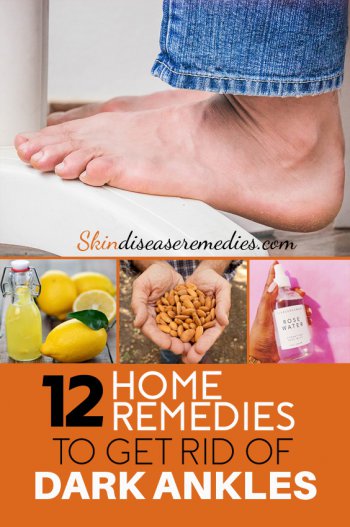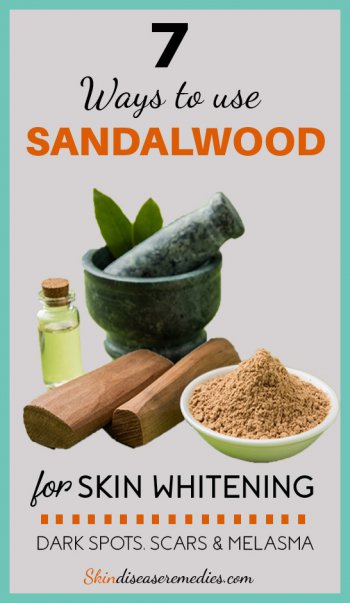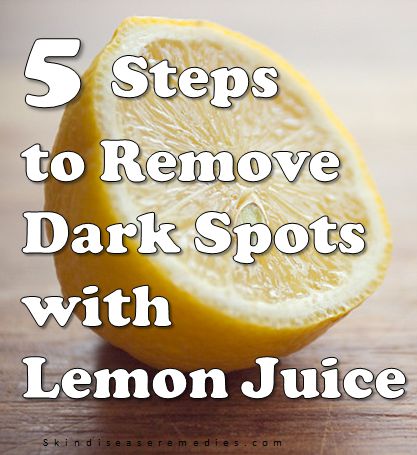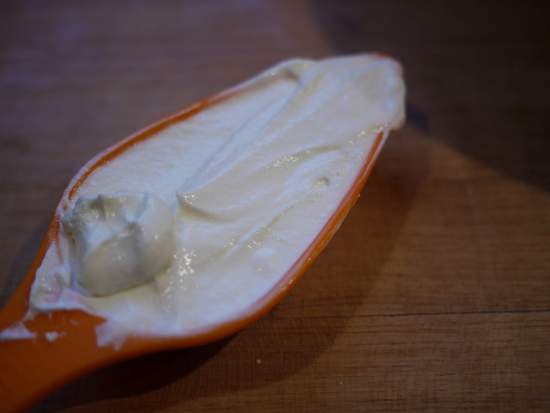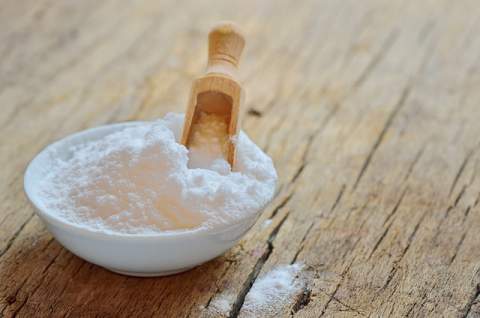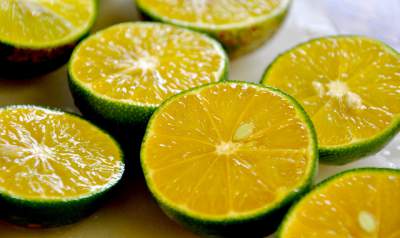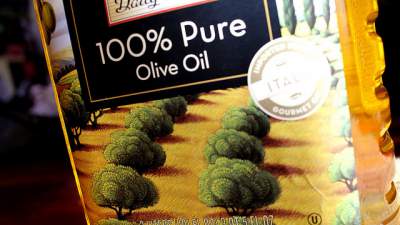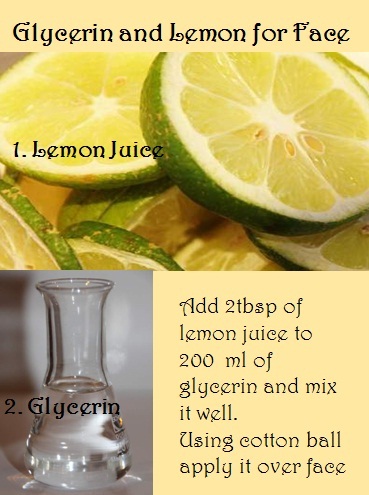
Glycerin is colorless, but because of its enticing moisturizing and healing properties cosmetic industries incorporated this ingredient into their skin care and body lotions. Unlike other natural remedies, glycerin attracts moisture to your skin.
Its emollient ability avoids oiliness and can make your skin supple. Assorted properties residing in glycerin can combat with dry skin and other skin related ailments.
More benefits of glycerin are listed below. Coming to lemon, it’s a home available ingredient that is known for its antibacterial and bleaching abilities in cosmetic world.
Extensively used for culinary purpose, lemon juice application can shrink large pores and make your skin firm.
10 Benefits of Glycerin and Lemon Juice for Face
- Your skin secrets natural oil to keep itself hydrated, when the skin fails to maintain moisture, dry itchy patches appears. An external moisturizer like glycerin or lemon brings back lost moisture to your skin.
- Ingredients in glycerin and lemon hold keratin, this helps to shed dead skin cells.
- Exceptional qualities of glycerin and lemon juice for face stimulates new cell generation and fasten healing process.
- This thick, colorless and sweet liquid can control excess oil production and lemon juice with its antimicrobial agents restrains acne causing bacteria.
- A study carried out in 2002, concludes that a cream with 20% of glycerin was able to treat dry and eczematous skin compared to cream without glycerin.
- Impurities and excess sebum clogged in pores can be removed using this mixture.
- Hyperpigmentation or skin discoloration is caused by increasing levels of a pigment called melanin. Sun exposure, hormonal imbalance, diet and other factors influence melanin levels. Fortunately you can reduce these dark spots using glycerin and lemon juice. Mix 2 tbsp of lemon juice to 200 ml of glycerin and store it. Wash your face and apply this solution using cotton ball regularly.
- Elasticity plays vital role in skin firmness. Excess stretching, loss of nutrients, smoking, facial expression, impurities and dehydration leads to wrinkles or fine lines. Apply glycerin or mix it with lemon juice regularly. Antioxidant and healing properties packed in this solution will reduce aging wrinkles. Along with this external remedy you must pay attention to nutritional diet.
- Inflammation is main cause behind acne blemishes, which get worsen due to P.acnes. Anti-inflammatory and antibacterial properties in glycerin and lemon will soothe pimples and fade acne scars.
- Your skin is the outermost part of your body; it protects inner parts from bacteria, germs, virus, impurities and harmful UV rays. Natural remedies like glycerin and lemon allies with skin to fight these foreign invaders resulting in supple and radiant skin.
Glycerin for Skin Whitening
Increasing impurities and dead cells tamper your enticing look. Cosmetic creams aren’t capable of cleansing these impurities off the skin.
Reason, beauty products itself incorporated with chemical preservatives that may damage your sensitive skin.
It’s damn simple to use glycerin to whiten your skin.
- Blend two tablespoons of lemon juice and two cups of rose water with 200 ml of glycerin.
- Mix thoroughly and apply it over prewashed face.
- Use cotton ball for topical application.
- Let it dry naturally for 15-20 minutes.
Lemon juice is prominent for bleaching and acidic property. Rose water is known for its exceptional healing, antibacterial, cleansing and aromatic effect.
How to Use Glycerin and Lemon Juice for Face?
You can use this lotion on face, around neck and on other parts of the skin. Sensitive skin owners, who guys must limit the use of lemon juice as it may make your skin more sensitive. Or stay home for a day after applying lemon juice over face.
- Take 200-250 ml of glycerin (you can get from local store) and add 2 tbsp of fresh lemon juice.
- Mix it well and refrigerate it.
Prepare your face before applying this face mask. Wash your face with water or cleanse it using cream. Acne prone skin must be exposed to steam or washed with lukewarm water, so that pores open up. Avoid squeezing or pressing pimples and pat dry with soft cloth.
When the face is still damp, using cotton ball apply glycerin & lemon juice solution on face. Leave it for about 15 minutes and then rinse it off with water.

